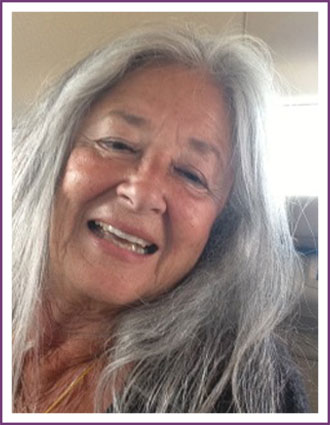FRANCINE (Conat) Lastufka TAYLOR

• Film Making
• Native Advocacy
• Communications
Inducted: 2014
FRANCINE (Conat) Lastufka TAYLOR
With the culturally diverse blood of Mexican, Spanish and French aristocrats, Blackfoot, Sioux, and French Canadians running in her veins, Francine Lastufka Taylor was a natural to lead Alaskans through their infancy in recognizing and celebrating their unique culture. For her efforts over the years, Francine was a finalist for the YWCA/BP Women of Achievement Award in 1996. In 1998 she was a finalist for the National Federation of Press Women’s Communicator of Achievement Award and earned the Alaska Press Women’s Lifetime Achievement Award the same year. One of her many successes was the creation of the Alaska Native Arts Festival 1966-1972, which she served as a founding director. Perhaps her greatest feat, however, is the founding of Alaska Moving Image Preservation Association, AMIPA, in 1991.
Collections of Alaska’s motion picture films, video and audio recordings were held by libraries, museums, archives, producer and the general public – none of which had the technical resources to preserve and provide access to them. Taylor led the charge to preserve these materials and to make them available to the public through the creation of AMIPA. Through public and private donations the collection and technical capacities of the organization quickly grew, and in 1997 AMIPA transitioned from an all volunteer organization to one having a paid curatorial, technical and administrative staff.
An accomplished pianist and singer, Taylor first used her talents to help disabled children at the Alaska Crippled Children’s Association through music. The program she developed became such a success the Anchorage School District asked her to volunteer her program to include all the city’s elementary schools. Taylor also performed with the Anchorage Community Chorus, the Anchorage Opera, the Alaska Festival of Music and the Alaska Chamber Singers. She served 15 years as a board member for the Visual Arts Center and is an award-winning documentary film maker.
A colleague and friend, Irene Rowan, a former president of Klukwan, Inc. and now a director of Northrim Bank, says Taylor, “became a fearsome activist at a time when most women lacked the inclination or courage to make waves.”
View Extended Bio